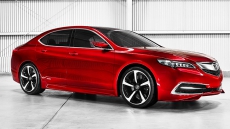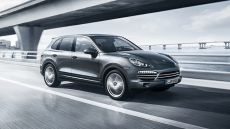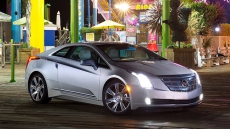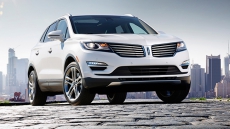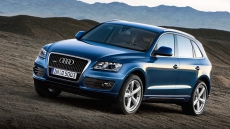A car that goes this fast has to stop just as well. When the brakes are applied, the car’s regenerative system supplies 90 per cent of the stopping power and the big disc brakes finish the rest of the stopping power.
Recently I had the opportunity to be at the North American introduction of the new electric car from Porsche called the Taycan in Niagara Falls, Canada. This is Porsche’s first venture into the electric car market as they feel it is important in the future of the automobiles business. To no one’s surprise Porsche is shooting for the fastest and the most advanced electric car on the market.
The first two models in their new line are the base Taycan Turbo and the upper market car, the Taycan Turbo S. Yes, it seems strange to use “Turbo” in the name as there are no turbo chargers in an electric car, but I assume they feel that we the public identify “going fast” with the name. Speaking of fast, the Taycan Turbo will do 0 to 100 kph in just three seconds and the “S” model will cut that number by 0.2 seconds to a tie of 2.8, and that’s blindingly fast.

To achieve these speeds Porsche uses a slightly different approach to the electric car platform by using two electric motors. They use one in the front and one in the rear, synchronized by a computer. Now, if that is not different enough, the makers go one step further by using a two-speed transmission in the rear motor, unheard of in present electric vehicles. So what does all this mean to the driver? It means that the two motors produce a combined power of 670 horsepower in the Turbo and 750 horsepower in the Turbo S model. If you know anything about electric motors you know they produce torque instantly which means that the Turbo model has 626 lb-ft of torque and the S model has 774 lb-ft of torque.
To achieve all this wonderful power, the lithium ion batteries are mounted in the floor to keep these heavy items low to make for better balance, which means better handling of this sports sedan. To enhance the electric motor the stators are wound in fine copper wire for more power in a standard electric motor.

To make charging faster, Porsche uses an 800-volt system, double than that of the standard electric car. The second gear in the rear electric motor, as you might have guessed, is used for using less power once your chosen speed has been reached, adding to the cars distance travelled in a single charge. To improve travel distances, Porsche has designed the car with a very slippery shape giving it a drag coefficient of 0.22.
A car that goes this fast has to stop just as well. When the brakes are applied, the car’s regenerative system (generates power for the batteries) supplies 90 per cent of the stopping power and the big disc brakes finish the rest of the stopping power. Adding to this stopping power and the handling of the car are staggered sized tires with 245/45R20 front and 295/40R20 rear on the Turbo and massive 265/35R21 front and 305/30R21 rears on the S model. Enhancing the handling even more, the Taycan is also equipped with four-wheel steering.

From the quick glance I had of the interior of the Taycan, the driver’s area seemed somewhat Porsche-like but with lots of touch screens to control driving functions. Seats appeared to look supportive and comfortable for a sport sedan. Storage for the car comes on both front and rear trunks, with 81 L front and 366 L in the rear. In keeping with its environmental status, the interior coverings are all made with recycled material, which with its stiff price might be a hard sell.
My first impressions looking at the Taycan were very positive. The designers have captured the Porsche family “look” with the sloping rounded hood and the 911 slanted rear area. There is no mistaking that this car is not a Porsche. On looks alone, this car will sell.
The big question is what will all this technology and speed cost? Well how about $173,900 for the Turbo and $213,900 for the Turbo S model? If this is a little much for your budget. Porsche will be launching a less expensive model, the 4S, at just $119,400 in the future. Will Porsche customers embrace this technology? It is too early to tell, but with this kind of performance I am sure there will be those who just have to have the fastest car and the newest technology.

HIGHLIGHTS
MSRP: $173,900 (Turbo), $213,900 (Turbo S)
Horsepower: 670 (Turbo), 750 (Turbo S)
Torque (lb-ft): 626 Turbo and 774 Turbo S
Gearbox: Two-speed on rear engine
PHOTOS: PORSCHE.COM

